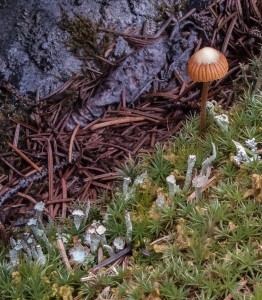 There is a place in the backwoods, down near the river where the trees open into a clearing and the clearing is carpeted in moss. I refer to it as the dying place because often when I go back there a new deer carcass has appeared, hide and bones scattered here and there. It feels like a sacred place, but not a sad place. In spite of the death that happens here, it is such a beautiful, gently quiet place. It’s the perfect place to sit on the soft cushion of moss and listen to the river and watch the herons going back and forth from the rookery, sometimes with gleaming fish in their needle long beaks.
There is a place in the backwoods, down near the river where the trees open into a clearing and the clearing is carpeted in moss. I refer to it as the dying place because often when I go back there a new deer carcass has appeared, hide and bones scattered here and there. It feels like a sacred place, but not a sad place. In spite of the death that happens here, it is such a beautiful, gently quiet place. It’s the perfect place to sit on the soft cushion of moss and listen to the river and watch the herons going back and forth from the rookery, sometimes with gleaming fish in their needle long beaks.
It is also an ideal place to get lost in the miniature world of the moss forest. Robin Wall Kimmerer’s book Gathering Moss has opened my eyes to the complex ecosystem under my feet and opened my mind to a new way of relating to the natural world. Her book is a combination of science and personal reflection, born out of her life as both a scientist and as a Native American writer who experiences the world within the framework of indigenous ways of knowing.
She writes: “In indigenous ways of knowing, we say that a thing cannot be understood until it is know by all four aspects of our being: mind, body, emotion, and spirit. The scientific way of knowing relies only on empirical information from the world, gathered by body and interpreted by mind. In order to tell the mosses’ story I need both approaches, objective and subjective. These essays intentionally give voice to both ways of knowing, letting matter and spirit walk companionably side by side. And sometimes even dance.”
With her encouragement I have taken small samples of the moss back to the house and placed them under the microscope, which allows me to wander at will through the stems, branches and leaves of the moss. There I have an ant’s eye perspective and I’m able to wander in this intimate forest, not in search of answers to any specific questions, but as an explorer open to whatever discoveries I might stumble upon. This is the joy of being an amateur naturalist and not a professional scientist. I am not trying to probe and prod data from the moss, I am simply listening to whatever it has to tell me. I love what Kimmerer says about learning in traditional indigenous communities.
“Learning takes a form very different from that in the American public education system. Children learn by watching, by listening, and by experience. They are expected to learn from all members of the community, human and non. To ask a direct question is often considered rude. Knowledge cannot be taken; it must be given…Much learning takes place by patient observation, discerning pattern and its meaning by experience.”
As I peered into the world revealed under the microscope’s lens, I found a different way of learning, “to let the mosses tell their story, rather than wring it from them.” It is way of learning I hope to carry out into my other explorations of the backwoods and beyond.
